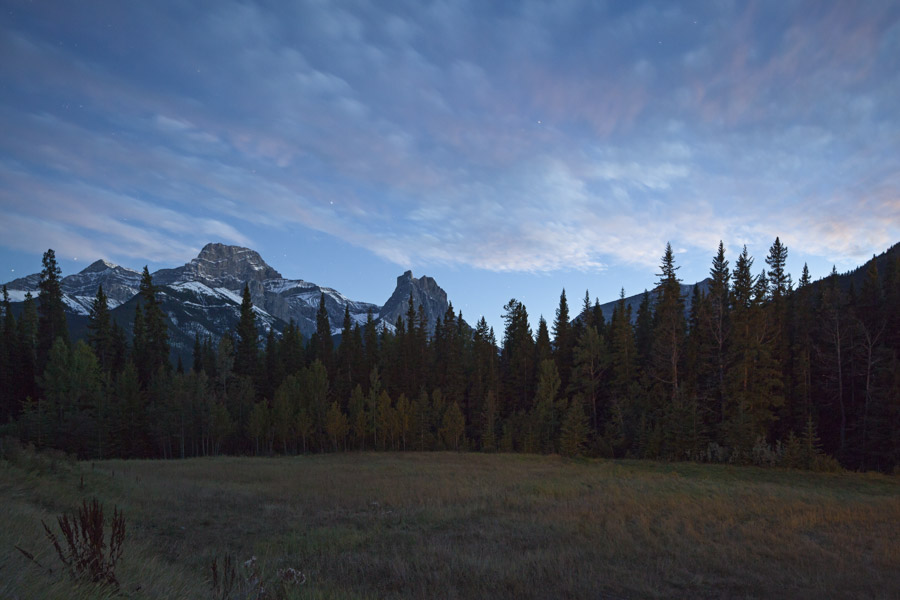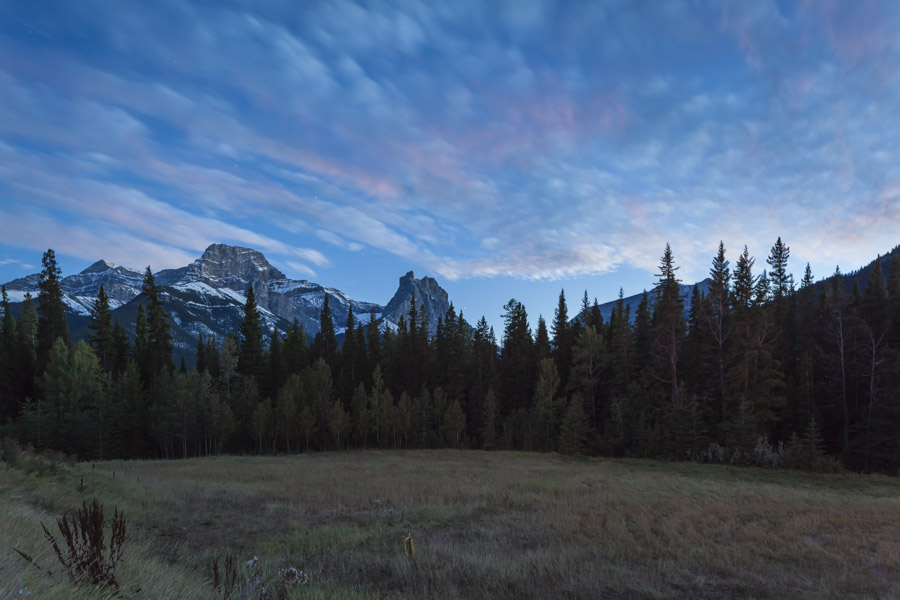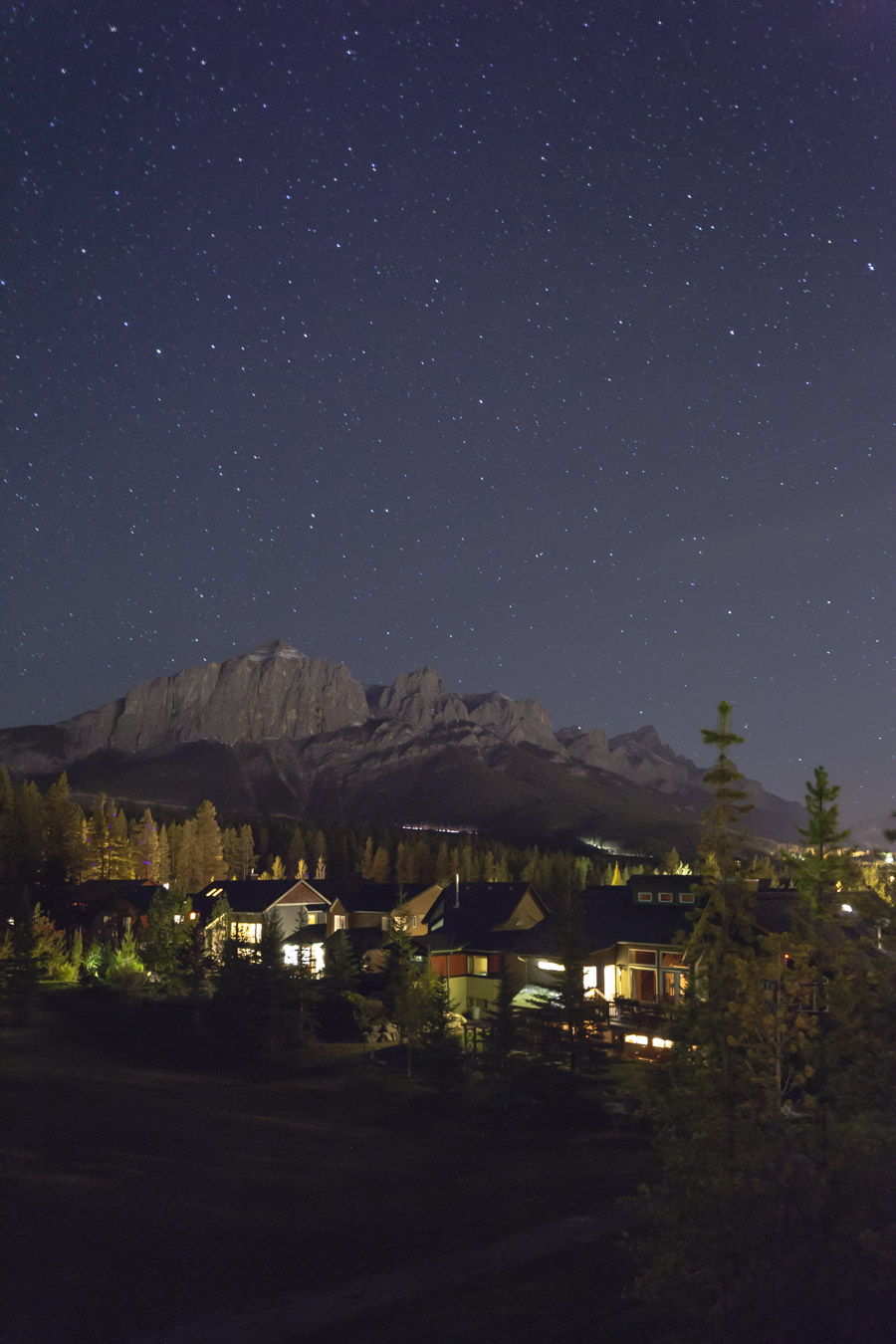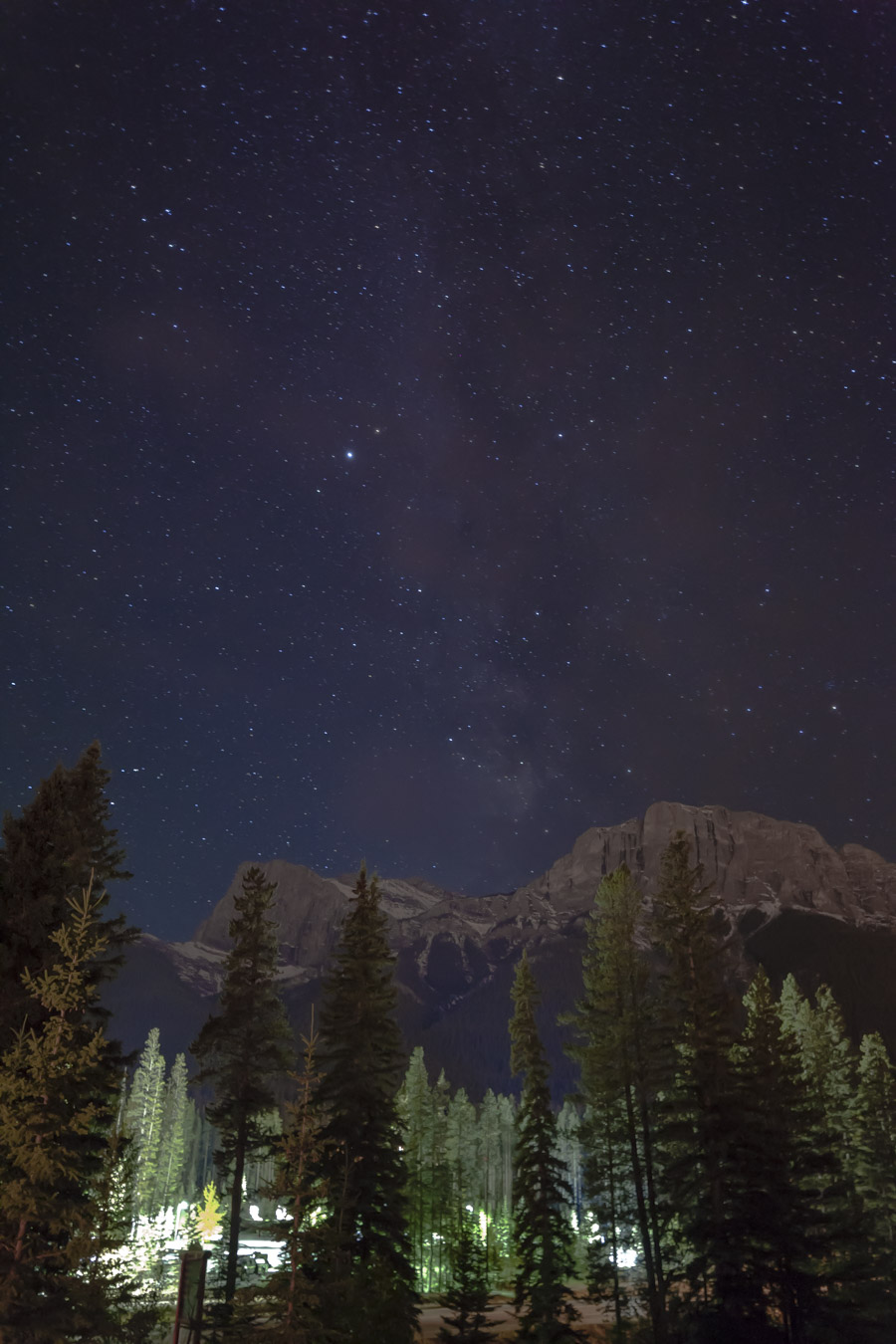This evening I went out to do some astrophotography, a type of photography for recording images of astronomical objects and large areas of the night sky. I went to where I expected there would be very little if any light pollution, an area just east of Canmore, near Dead Man’s Flats. This is a locationI know well from previous visits, with a great view of Mount Lougheed and Wind Tower. I arrived well before darkness and was surprised to see some unexpected cloud moving in. The good news is that I had the opportunity to shoot some very nice clouds. On the other hand, it would not be good for photographing stars. I got some nice shots before nightfall; you can see them below. Mount Lougheed is the higher peak on the left, Wind Tower is the smaller one to its immediate right. The sun had set but continued to cast some pink light on the clouds. If you look closely, you can see a few stars peeking through.

Both photos were taken at about 9:00 PM, so light was getting dim. I was using a 24 mm tilt-shift lens to avoid problems with depth of focus, since I wanted to use the largest aperture I could (f/3.5 for this lens) to better capture the little light remaining. Even with the sensor sensitivity at ISO 800, the exposure was 20 seconds, a long time. As it got darker, it appeared that the cloud cover would thwart my intentions to photograph the stars. I chose to pack up and go home.

By the time I go home, the cloud cover had cleared and I chose to shoot some stars from the comfort of our back deck. Not the darkened environment of Dead Man’s Flats but surprisingly good. I took this first photograph looking west. That’s the East End of Rundle (EEOR) in the background, our Canmore neighbourhood in the foreground. Despite all the light, I was able to see the stars quite clearly and they photographed well. The trick with astrophotography is to limit the time the shutter is open, while at the same time capturing enough light to define the image. Due to the rotation of the earth, the stars will appear as streaks of light, rather than points of light if the exposure is too long. The rule of thumb for shutter speed is the “rule of 600” which is simply 600 divided by the focal length of the lens. With a focal length of 24 mm, that means I targeted a shutter speed of 25 seconds. The rule is more of a guideline than an absolute limit. I found that I could get better contrast between the stars and sky with a few seconds more exposure. There may be a little streaking but not enough to detract from the overall look of the image. Again, in the interest of capturing as much light as possible in the time available (in this case, 30 seconds), I used the maximum aperture available, f3.5 and increased the ISO to 2500 to achieve the desired exposure.

Looking eastward, I found what I was seeking, the Milky Way. You can see it faintly in the sky directly above the mountains in the centre of the scene. It looks more like a mist than the galaxy that contains our solar system. Its name “milky” is derived from its appearance as a dim glowing band arching across the night sky. I find the bright light in the foreground a bit irritating. I look forward to finding a much darker area than the Town of Canmore for my next attempt at astrophotography.


Hello uncle peter it’s Christyna Desjardins i would like to say that your pictures are amazing, i really in joy seeing your pictures of stars and the milky way.
Some nice night shots Peter…